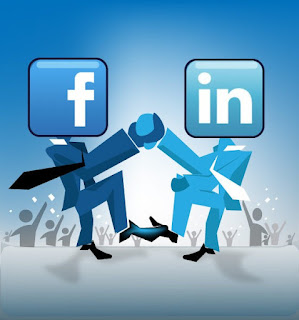Unlocking LinkedIn: The Key Differences from Other Social Media Platforms and How to Excel Professionally
In today's digital age, social media platforms play a pivotal role in our personal and professional lives. However, not all social media platforms are created equal. LinkedIn, the world's largest professional network, often gets mistaken for just another social media site like Facebook, Instagram, or Twitter. This misconception can lead to missed opportunities and ineffective use of the platform. In this blog post, we will explore why people struggle to differentiate LinkedIn from other social media and provide insights on how to leverage LinkedIn for professional success.
Understanding the Differences
Purpose and Audience
LinkedIn: Primarily designed for professional networking, LinkedIn connects job seekers, employers, and industry professionals. The focus is on building and nurturing professional relationships, showcasing skills, and exploring career opportunities.
Other Social Media: Platforms like Facebook, Instagram, and Twitter are geared towards personal interactions, sharing life updates, photos, and casual conversations. They cater to a wide range of interests, from entertainment to news and lifestyle.
Content and Engagement
LinkedIn: Content on LinkedIn revolves around industry news, professional achievements, job postings, thought leadership, and career advice. The engagement is more formal, with a focus on meaningful professional interactions.
Other Social Media: The content is diverse, including memes, personal photos, event updates, and entertainment. Engagement is casual and often involves likes, comments, and shares without a professional context.
Profile Presentation
LinkedIn: A LinkedIn profile serves as an online resume, highlighting professional experience, skills, endorsements, and recommendations. It is tailored to attract potential employers and professional connections.
Other Social Media: Profiles on other platforms are more personal, showcasing hobbies, interests, and social circles. The emphasis is on personal expression rather than professional credentials.
How to Use LinkedIn Effectively
Optimize Your Profile
1. Craft a Compelling Headline
Your headline is one of the first things people see when they visit your profile. Instead of just listing your job title, use this space to showcase your expertise and value proposition. For example, instead of "Marketing Manager," you could write "Digital Marketing Expert | Driving Growth through Innovative Strategies."
2. Professional Profile Picture
A high-quality, professional profile picture is crucial. Choose a clear, well-lit headshot where you are dressed appropriately for your industry. Your profile picture should convey professionalism and approachability.
3. Write a Strong Summary
Your summary is your elevator pitch. It should be a concise and compelling narrative that highlights your career achievements, skills, and goals. Use this space to tell your story and explain what drives you in your professional life.
4. Highlight Your Experience
When listing your work experience, focus on achievements rather than just duties. Use bullet points to detail your accomplishments and the impact you had in each role. Quantify your successes with numbers whenever possible (e.g., "Increased sales by 30%" or "Managed a team of 10 people").
5. Showcase Your Skills and Endorsements
List relevant skills that align with your career goals and expertise. Encourage colleagues to endorse these skills, as endorsements can enhance your credibility. Additionally, take skill assessments on LinkedIn to validate your proficiencies.
6. Obtain Recommendations
Recommendations from colleagues, managers, or clients add credibility to your profile. Reach out to connections who can speak positively about your work and request personalized recommendations.
7. Engage with Content
Stay active on LinkedIn by sharing industry-related content, writing articles, and commenting on posts. Engaging with content not only increases your visibility but also positions you as a thought leader in your field.
8. Customize Your URL
A custom LinkedIn URL looks more professional and is easier to share. You can customize your URL by going to your profile settings and editing the public profile URL. Example: https://www.linkedin.com/in/supuni/
9. Add Relevant Certifications and Courses
Showcase any certifications, courses, or training programs you have completed. This not only adds credibility to your profile but also demonstrates your commitment to professional development.
10. Join and Participate in Groups
LinkedIn groups are a great way to connect with like-minded professionals and stay updated on industry trends. Join groups related to your field and participate in discussions to expand your network and visibility.
Network Strategically
Connect with Purpose: Build your network by connecting with industry professionals, colleagues, and potential employers. Personalize connection requests to establish genuine relationships.
Join Groups: Participate in LinkedIn groups related to your industry. Engage in discussions, share insights, and learn from peers.
Engage with Content: Like, comment, and share posts that resonate with you. Provide thoughtful insights to add value to conversations and increase your visibility.
Share Valuable Content
Create Posts: Share industry news, professional achievements, and thought leadership content. Aim to provide value and demonstrate your expertise.
Write Articles: Publish long-form articles on LinkedIn to showcase your knowledge and establish yourself as a thought leader in your field.
Engage with Others Professionally: Acknowledge and respond to comments on your posts. Engaging with your audience fosters relationships and increases your reach.
Behaving Well on LinkedIn
Professionalism: Maintain a professional tone in all interactions. Avoid slang, overly casual language, and controversial topics.
Respect: Show respect to all users, regardless of their position or background. Engage in constructive and polite discussions.
Authenticity: Be genuine in your interactions. Authenticity fosters trust and strengthens professional relationships.
Confidentiality: Respect privacy and confidentiality. Avoid sharing sensitive information about your workplace or colleagues.
LinkedIn is a powerful tool for professional growth, but it requires a different approach than other social media platforms. By understanding its unique purpose and using it effectively, you can unlock countless opportunities and build a strong professional network. Remember, LinkedIn is not just about connecting: it's about engaging, sharing, and growing together in the professional world.
Happy networking!

Comments
Post a Comment